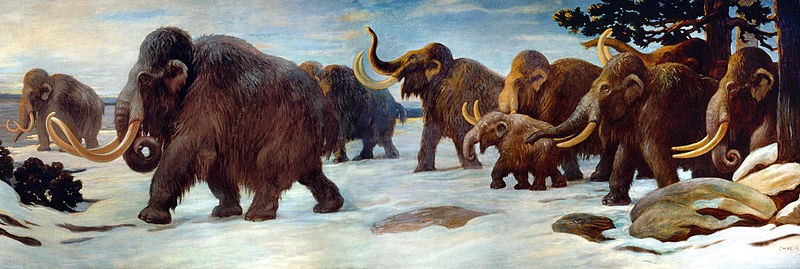Some sources claim that the CIA is funding research on technologies that may bring back extinct species like the mighty woolly mammoth, despite the widespread skepticism.

Is the CIA Bringing the Mammoth Back?
Colossal Biosciences, a biotechnology business, has devoted all of its efforts to bringing back the enormous elephants by "fusing its genes with Asian elephant DNA and the Tasmanian tiger."
The CIA reportedly invested in the "de-extinction corporation" despite skeptics, according to The Intercept. The business previously attempted to reintroduce the Tasmanian tiger.
Several media publications stated in 2019 that scientists have successfully revived some mammoth cells. The idea is made much more fascinating by rumors that the CIA is involved in the situation.
Why the CIA would be interested is unclear. The IT business, which the intelligence organization supports, has received funding from a company named In-Q-Tel. According to a blog post on the In-Q-Tel website, "Strategically, it's less about the mammoths and more about the capabilities."
Ben Lamm, a co-founder of Colossal, told The Intercept that "it is crucial for all elements of our government to build them and have a grasp of what is possible."
But, Can Scientists Actually Bring the Wooly Mammoth Back to Life?

It may not be feasible (for now) to bring back the woolly mammoth and other extinct animals. More of the extinct rat's DNA had to be extracted than originally anticipated to rebuild it.
Scientists' hopes of reviving more well-known ancient species like the woolly mammoth may have been dashed by discovering an extinct rat that formerly resided on an island in the Indian Ocean.
Just over a century has passed since the last known sighting of the Christmas Island rat, but experts now claim that not even its whole genome is sufficient to bring it back to life.
The Science Behind De-Extinction
According to Douglas McCauley, an ecologist at the University of California, Santa Barbara, who was not involved in the study, the work "shows both how wonderfully close-and yet-how devastatingly far" scientists are from being able to genetically alter a close relative in a process known as "de-extinction" and bring back extinct species.
Although no species has been restored, many geneticists and futurists are interested in de-extinction.
Many scientists I know wonder, "Can I do this? Karen Wendling, an ethicist at the University of Guelph, makes this statement. The possibility of witnessing an extinct creature come to life is part of what makes this so fascinating. However, returning an important species to its natural environment could also aid in the recovery of ecosystems.
The mammoth previously controlled arctic plants and trees and nourished meadows with excrement. Colossal Laboratories and Biosciences is working on breeding mammoths or at least creatures that resemble them, from elephants.
According to McCauley, "there is a lot of optimism and hype that de-extinction would save us" from collapsing ecosystems.
Scientists would first need to sequence the genome of an extinct species before editing the DNA of a closely related contemporary species to match it. The next difficult task is to make embryos with the modified DNA and carry them to term in a live surrogate mother.
About 20 extinct species' genomes have been sequenced thus far, including a passenger pigeon, a cave bear, and many varieties of mammoths and moas. The extinct DNA, however, has not yet been recreated in a living relative, according to any reports.
For the most recent updates from the animal kingdom, don't forget to follow Nature World News!
© 2026 NatureWorldNews.com All rights reserved. Do not reproduce without permission.





